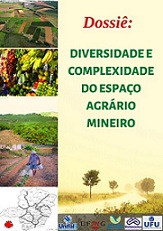A comunidade Boa Esperança/Frutal (MG) e os equilíbrios da unidade camponesa frente ao avanço do agronegócio canavieiro
DOI:
https://doi.org/10.14393/RCT153603Resumen
Faced with the expansion of sugarcane and sugarcane plantations in the Triângulo Mineiro, especially since the 2000s, we observed new territorial (re)organizations that incorporate elements to the social reproduction strategies of the peasants of this region, established from the relationship between the corporate logic of sugar-energy production and peasant agriculture. The Boa Esperança community, located in the City of Frutal (MG), has in its history a diversified peasant production, but the process of advance of the sugarcane front has been limiting and imposing a series of transformations and, consequently, adaptations in the productive and sociocultural scope of families. This movement was evident from the year 2006, with the installation of two plants of the sector in the township. Thus, the present paper aims presents the analysis and results acquired in my master research at the Federal Universality of Uberlandia, based on a peasant equilibrium discussion developed by Jan Douwe an der Ploeg, reevaluating the conjecture that put forward a new community dynamic, such its peasant characteristics of organization, and strategies stablished from productive forces allied to Capital and the peasant.































